
It’s time to look up to the sky and see what beautiful images are out there for us to see. From Mesopotamian culture to the Greeks and Babylonian stories, the heroes and villains of mythology have been embodied in the numerous constellations found among the stars. While the brilliant astronomer Ptolemy discovered 48 constellations, by 1922, the International Astronomical Union officially identified 88 constellations, which is also the number in the current modern listing. These constellations have been derived from numerous mythological stories, including Greek and Roman stories revolving around the exploits of demigods like Hercules and Perseus. Here are a dozen of the most interesting ones you will ever see.
1. Cassiopeia
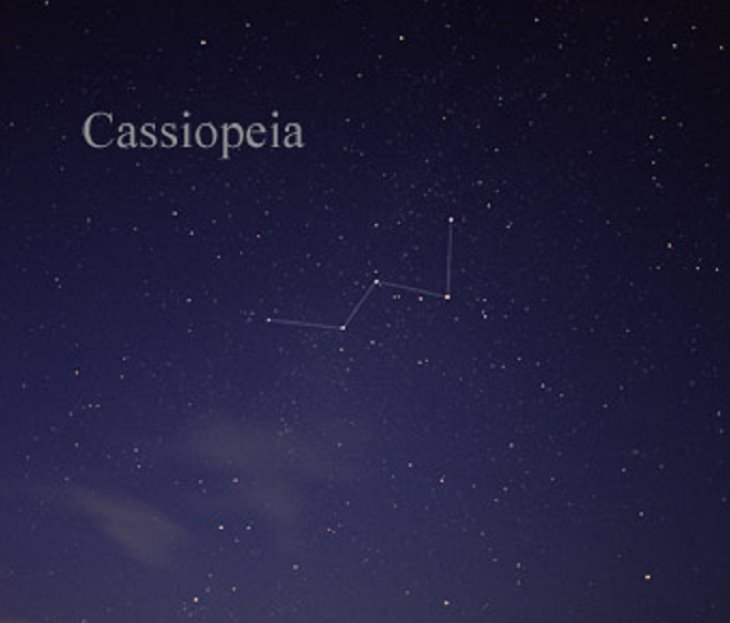
(By Till Credner, Wikimedia Commons)
This constellation calls the northern sky its home and is visible all year long at latitudes above 34°N. It can be viewed seasonally in tropic and southern regions, from the months of September to November.
Cassiopeia is a common figure in Greek mythology, known for her beauty and vanity. She was the mother of Andromeda (another fair lady from Greek Mythology who has graced the star).
She was sent to the stars after angering Poseidon by boasting about her daughter’s beauty, as well as her own, and claiming that it was far greater than that of the Nereids, who were sea nymphs and the children of the Old Man of the Sea.
The constellation itself when connected resembles the letter ‘W’.
2. Andromeda

(By Till Credner, Wikimedia Commons)
One of the largest constellations, Andromeda is approximately 1.400 times the size of the full moon. However, it has a northern inclination, so despite its grand size, it is only visible above latitude 40°S and is most visible during evenings in Autumn.
Andromeda’s rise to the stars was a little nobler than her mother’s, though no less dramatic. After Cassiopeia’s remarks about the beauty of the Nereids, Poseidon sought further vengeance by unleashing the sea monster Cetus on the kingdom of her father.
On the advice of an oracle, King Cepheus, her father, chained her to a rock in the ocean to be sacrificed to the beast, believing it would spare his kingdom. She was saved by the hero Perseus, who then became her husband.
They, along with their 9 children proceeded to create the kingdom of Mycenae, which today is an archeological site still carefully maintained. To honor her, Athena placed her in the sky after her death.
3. Delphinus
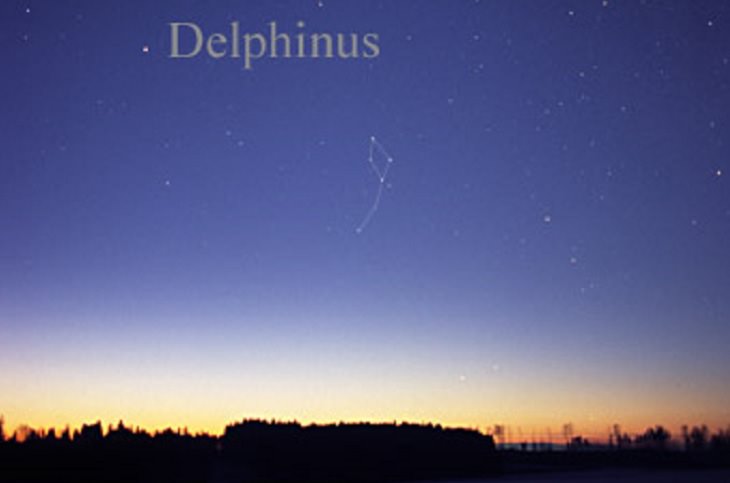
(By Till Credner, Wikimedia Commons)
Here’s a constellation found close to the celestial equator in the northern hemisphere, and is ranked at 69th in size, making it among the smallest of constellations. It is surrounded by numerous other large constellations, most notably the Pegasus (the winged horse) and Sagitta, the arrow and Aquarius, the water carrier.
The store of Delphinus also involves the Sea God Poseidon. Poseidon had decided he wished to marry the beautiful Amphitrite, who was a beautiful virginal sea nymph. Fearing to lose her chastity, she fled to the mountains of Atlas and hid there.
Poseidon sent numerous men and beasts out to search for her. One of these searchers was a man named Delphinus, who had the fortune to accidentally bump into the lovely Nereid. He somehow managed to convince the sea nymph to accept Poseidon’s offer of marriage.
As a reward, Poseidon placed an image of a dolphin in the stars to honor Delphinus, whose name is also the Greek word for dolphin.
4. Pegasus

(By Till Credner, Wikimedia Commons)
The constellation of Pegasus, as you can see from the photo, is incredibly large. It's the 7th largest constellation and stretches to nearly 1.200 square degrees. It neighbors numerous other famous constellations, including Andromeda and Delphinus. This constellation depicts the winged horse, Pegasus.
Pegasus has been a major part of numerous stories in Greek Mythology. It is believed that the story of the Pegasus began with a union between Medusa, the snake-haired Gorgon, and Poseidon, God of the Sea. The magical winged horse is also rumored to have sprung from the blood of Medusa when her head was cut off by the hero Perseus.
One legend of the magical powers of Pegasus begins with the creation of a spring by the winged horse, using only his hooves. This spring was then named Hippocrene and it was believed that anyone who drank the water of this spring would be blessed with the ability to write beautiful poetry, much like the Mead of Poetry in Norse Mythology, but less gruesome.
Pegasus also aided Bellerophon in defeating the dreaded beast, the Chimera, with the help of Athena. The Pegasus has had many roles to play in Persian, Chinese and Hindu Astronomy, as well, securing its place in the stars.
5. Sagitta
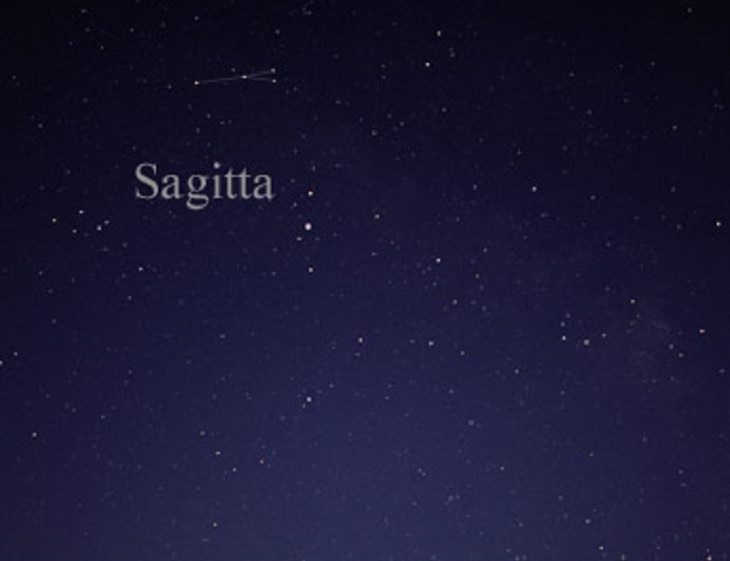
(By Till Credner, Wikimedia Commons)
Out of the 88 constellations officially recognized, Sagitta is the 86th largest, which would make it the 3rd smallest. It is situated in the northern sky, bordering the constellations Pegasus and Aquila, and is visible from everywhere in the world except the Antarctic circle.
The Sagitta is the Latin word for Arrow, and this constellation is not to be confused with the Sagittarius who is the Archer. The Arrow, Sagitta, in Greek Mythology, is believed to be the arrow of Hercules and was placed in the stars for one of two possible reasons.
The Arrow, Sagitta was first used by the hero Hercules to kill Aquila, the eagle who was sent down by Jove (Zeus), to gnaw on the liver of Prometheus in perpetuity. The Arrow is also believed to have been the one used by Hercules to strike down the Stymphalian birds, Aquila the Eagle, Cygnus the Swan, and Lyra the Vulture, who were adorned with beaks, claws, and wings made entirely of iron. They lived in the marshes of Arcadia, feeding on human flesh. The Arrow was believed to have lain between them for years after.
One final story of Sagitta is that it is the Arrow that aided the Sun God Apollo in the absolute destruction of the Cyclopes.
6. Aquila

(By Till Credner, Wikimedia Commons)
Aquila is the Eagle, a constellation located in the Milky Way Galaxy, and is most visible during summers in the northern hemisphere. It is the 22nd largest constellation.
The Eagle Aquila is associated with numerous stories in a variety of mythologies. In Greek mythology, Aquila was the eagle that carried the thunderbolts of Zeus, as well as one of the Stymphalian birds struck by Hercules’ arrow Sagitta.
In Hinduism, the creature Aquila has been identified to resemble Garuda, a half-eagle half-human deity that assisted Rama in the battle against King Ravana, who had kidnapped his wife Seetha.
Ancient Egyptian culture attributes the constellation to the falcon of Horus, due to its proximity to Sagittarius.
7. Serpens
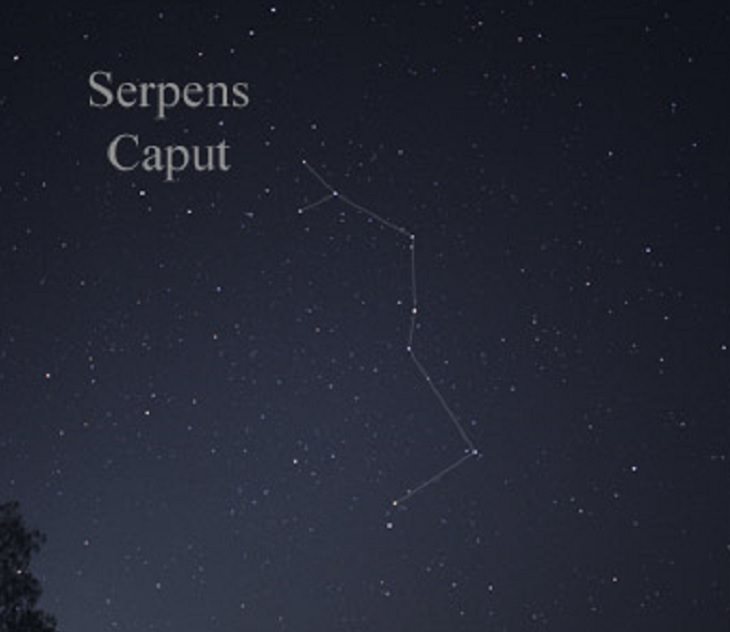
(By Till Credner, Serpens Caput, Wikimedia Commons)
As the name would suggest, this constellation depicts a serpent. It is one of the most unique constellations as it has two separate noncontinuous parts to it in the Northern Hemisphere.
One lies in the west entitled Serpens Caput (the serpent's head) and in the east is Serpens Cauda (the serpent's tail). This constellation lies over and across the constellation Ophiuchus, the serpent-bearer who grasps the serpent in his hands.
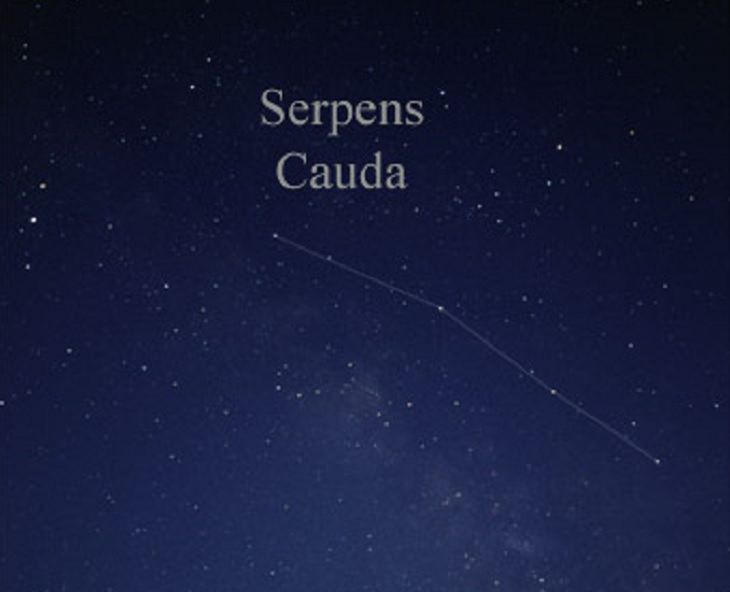
(By Till Credner, Serpens Cauda, Wikimedia Commons)
Ophiuchus is representative of the Greek Mythological character Asclepius, who was the Son of Apollo and the God of medicine. He was a renowned healer and was the holder of a snake that he used in his healing processes. Legend has it he once killed a snake and saw it come back to the life because of a revival herb that had been placed on it before his death.
Snakes, in general, were considered as symbols of rebirth due to their ability to shed their skin. However, this miracle witnessed by Asclepius allowed him to mimic the technique to revive dead humans. This is believed to be the inspiration behind the constellation of Serpens.
8. Hercules
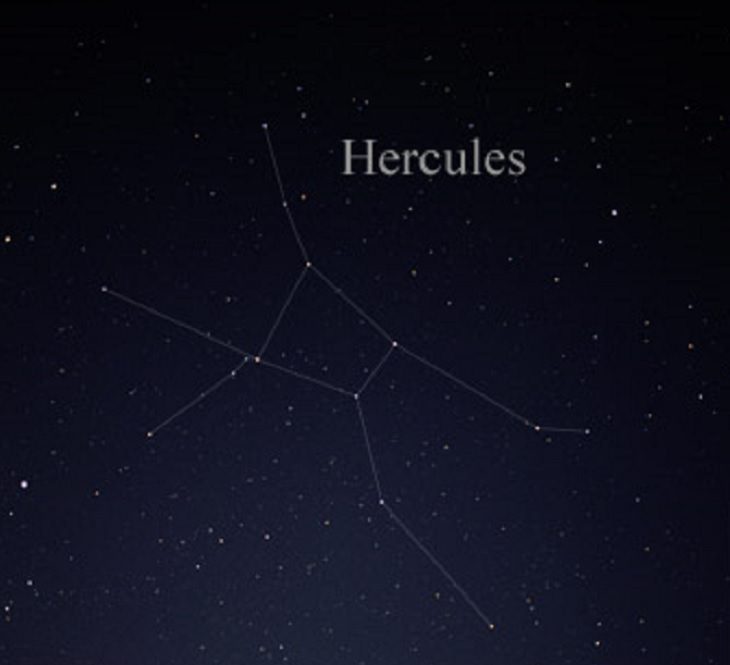
(By Till Credner, Wikimedia Commons)
Constellations are all about memorializing heroes, and Hercules has to be one of the most famous of them all. It is the 5th largest constellation and is bordered by Ophiuchus, Aquila, Serpens Caput, and finally, the constellation Draco.
Hercules has many stories that make him a legendary character worth remembering. Also known by the name Heracles, he was the heroic son of Zeus and half-brother of the beloved Perseus. He is perhaps best known for his victorious completion of the 12 labors of Heracles, a series of obstacles presented to him. He was assigned these tasks as a penance for killing his son, daughter, and wife after being driven mad by Hera.
The depiction of Hercules as written in the stars, shows him kneeling, and given the closeness of this constellation to that of Draco, it is believed that he is kneeling above Draco, crushing the creature under his feet.
9. Draco
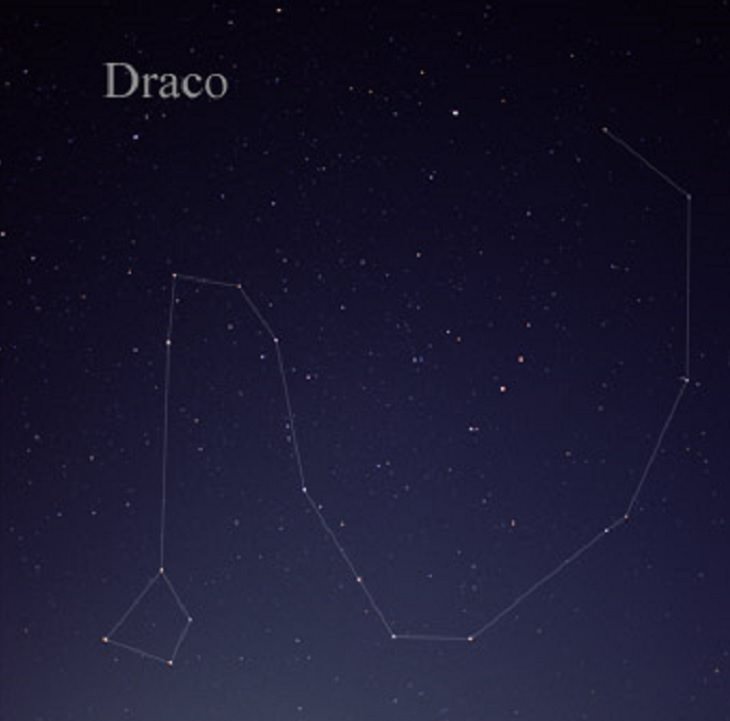
(By Till Credner, Wikimedia Commons)
Draco is the Latin word for dragon, so naturally, the constellation depicts a dragon, and as stated above, is seen at the feet of Hercules. It is a circumpolar constellation and is visible year-round.
Dragons in general play a large role in Greek mythology, such as Ladon, the dragon who guarded the golden apples of Hesperides, who was slain by Hercules during his completion of the 12 labors. Some legends say that this great dragon was believed to have 100 heads that he used to vehemently guard the apples. As a reward for his valor as a guard, he was placed amongst the stars.
Typhon is another prominent dragon in Greek Mythology, who was the Titan son of Gaia, believed to be represented by this constellation...
In Greco-Roman mythology, Draco is the name of a dragon, one of the Gigantes, who was involved in a ten-year battle against the Olympians. He was killed by the Goddess Minerva (Athena) and then thrown into the sky by her. As he was thrown, his body became contorted and before he could straighten it, he landed in the North Celestial Pole, where his body was frozen by the cold.
10. Hydra
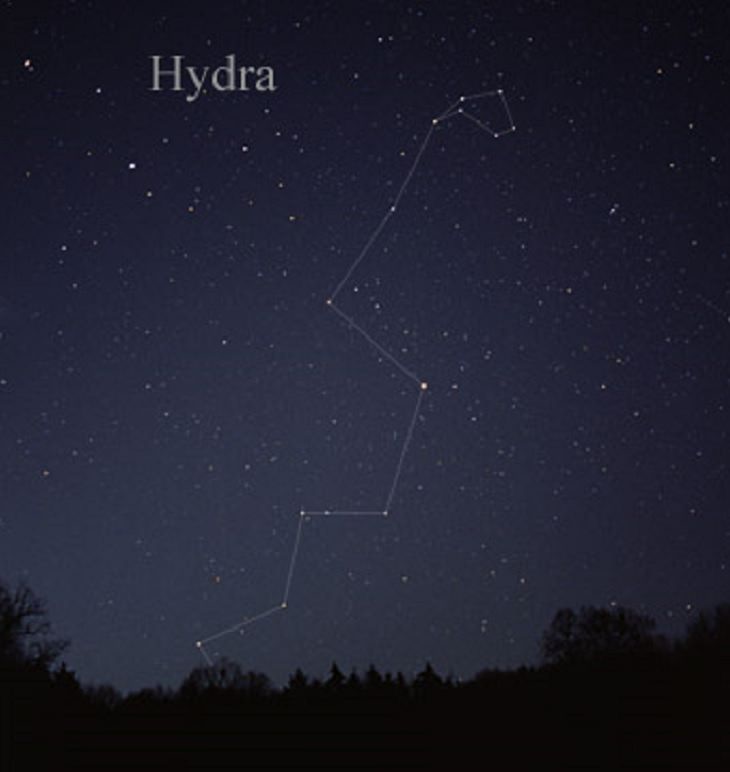
(By Till Credner, Wikimedia Commons)
Moving on to another incredible serpent of the sky, the Hydra is the largest of the constellations recognized of the 88 modern constellations and is also the longest, standing at over 100 years. It is bordered by the constellations Libra, Centaurus, and Cancer, and is located in the southern hemisphere.
The Hydra is another mythological creature that has numerous connotations and interpretations. The origin of the mythological creature is a hybrid of a serpent, bird and a lion. One legend that attributes the presence of this beast to the stars is that of the crow and Apollo.
A crow was sent to fetch water for Apollo and returned with a cup of water that had in it a water snake. Seeing through the attempt to harm him, Apollo was deeply angered and threw the cup, the crow and the snake up into the sky, embedding them into the sky in the form of the Hydra.
The Hydra is also the name of a beast fought and killed by the hero Hercules. When one head of the giant serpent was cut off, two more would grow in its place, making the creature almost impossible to kill. Iolaus, the nephew of Hercules, burnt the necks of the beast as each head was severed off, which prevented them from growing further and allowed Hercules to slay the beast.
11. Centaurus
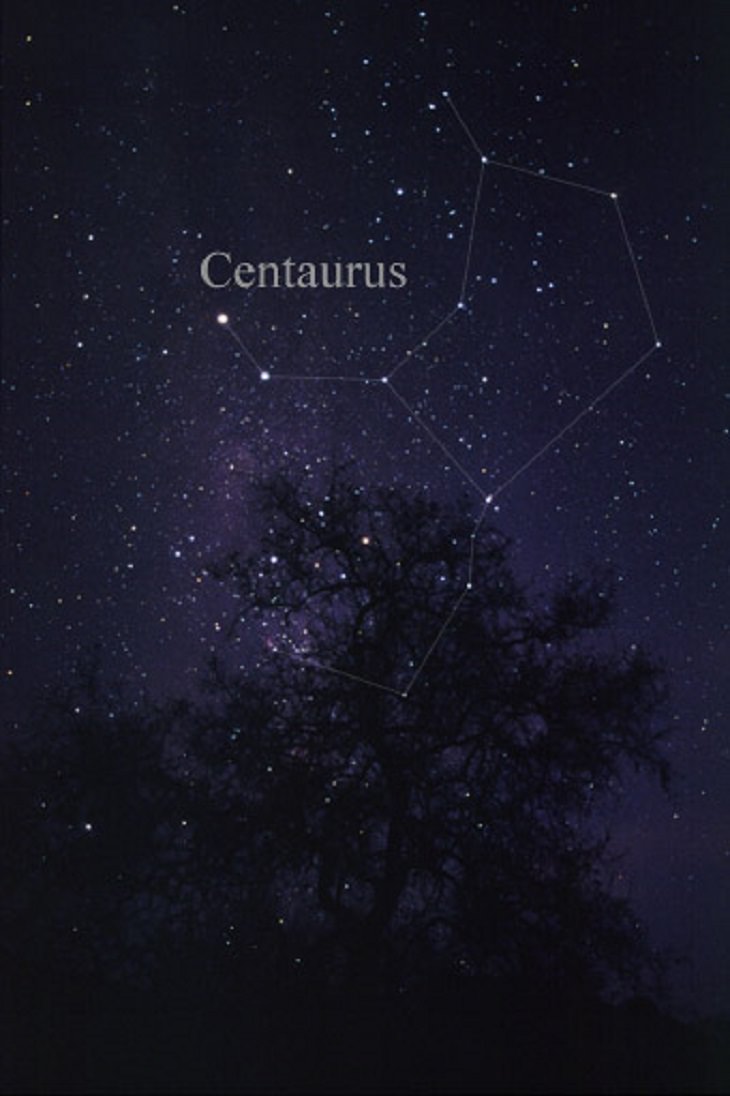
(By Till Credner, Wikimedia Commons)
Centaurus is another constellation in the southern hemisphere and it stands as the 9th largest. It is completely visible to the naked eye in clear conditions and is one of the brightest constellations.
The constellation Centaurus depicts a picture of a half-man, half-horse creature, much like the constellation Sagittarius. The creature itself can be traced back to a Babylonian constellation named the Bison-man, which depicts two images: one of a bison’s body with a human head, and another with the torso and head of a man and the rear legs and tail of a bison.
It is believed that the constellation depicts the centaur Chiron who was a teacher to such heroes as Jason, Hercules, and Theseus. An arrow accidentally shot by Hercules resulted in him becoming poisoned, and on his passing, he was placed in the stars.
12. Leo

(By Till Credner, Wikimedia Commons)
Leo, the Lain word for Lion, is the 12th largest constellation and has numerous bright stars that give it an extraordinarily distinctive shape, resembling that of a crouching lion. The mane and the shoulders also resemble the Sickle, an asterism (cluster of stars) which is shaped like a backward question mark.
The Leo is one of the earliest recognized constellations that is mimicked in not only Babylonian constellations but Mesopotamian constellations as well. Mesopotamian culture represents Leo as the creature Humbaba, who was slain by Gilgamesh, the king of Uruk. It is also similar to the “Great Lion” star, Regulus, which is the brightest star in the constellation of Leo.
Greek mythology identifies the constellation Leo as the Nemean Lion, who would lure warriors into a trap by kidnapping women to play the role of “damsel in distress”. After the warriors would approach, the Lion would consume them. Defeating the lion seemed almost impossible as the Nemean lion was impervious to human weaponry.
The Nemean Lion was caught and slayed by Hercules as one of his 12 labors, freeing all the damsels in distress caught in his wake. In honor of the victory of Hercules, the Nemean Lion was placed in the sky by Zeus.